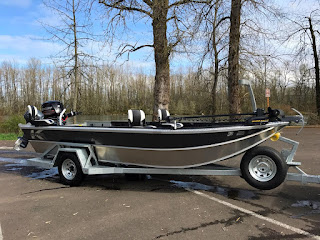The Long Way Home 6.2.2023
I have found the perfect part-time job for retired freight brokers like me who need to supplement an inflation battered Social Security income. The last several summers I toiled in retail sales, helping folks find what they need and ringing up sales for my never satisfied employers. Many a beautiful North Shore day was spent indoors, entertaining customers who dubbed me as “a hoot” in a Google review.
Not this year.
Much to my surprise, I’ve been hired by the Cook County Soil and Water Conservation District (SWCD) to serve as a Watercraft Inspector, seeking out invasive species that may be affixed to a watercraft and sharing a bit of knowledge with the public about Aquatic Invasive Species (AIS) and how we can control their spread. Trained and authorized by the Minnesota Department of Natural Resources (DNR), I’m ready to go.
My surprise at getting hired is attributed to the fact that I’ve never had a government job before, and due to what comes off my keyboard, I’m not always viewed positively by those who make government their career. Life often reminds me to never say never.
Instead of standing at a POS (Point of Sale for the retail challenged, but also a description of the damned thing when it malfunctions.Come to think of it, the POS label is applied to me by folks, once they get to know me.), I’ll be stationed at various boat landings checking for funky plants and animals and getting the word out about how to control the spread of those dreaded things. Hopefully boat owners will see the “hoot” side of me and not a POS with a hi-vis vest and a clipboard.
Just about a year ago I wrote an article for this paper headlined, Jet Skis Are Not the Only Invasive Non-Native Species in North Shore Lakes.
I started the article not knowing much about AIS. Zebra Mussel infestations that clogged water inlets at power plants and water treatment facilities were all over the news several years ago. Eurasian milfoil was, in my distracted mind, just infesting the popular sporting lakes around the Twin Cities. That’s about all I knew.
Some of these AIS were introduced to the pristine (irony intended) waters of Lake Superior by ocean going vessels dumping the ballast water they carried from origin while approaching Duluth so they could load up with grain, coal, and the occasional export container. I recall the days when container shipping was in its infancy and the Port Authority intended Duluth to be a player in the export of containers. They spent serious money on cranes and lifts to handle them. Duluth never quite made it with commercial exporters of containerized traffic, but international bulk shipping still takes place and thrives today. And ocean going vessels drop their ballast before entering the inland water system.
In Minnesota, the Watercraft Inspection Program began in 1992 based on legislation proposed by the DNR, fishing groups, and the Minnesota Lakes Association. Additional legislation passed in 2011 allowed the DNR to give additional authority to watercraft inspectors.
The inspection program began here when Cook County received DNR funding in 2014. The current AIS Coordinator for the SWCD, Amanda Weberg, started the current program in 2015. “The inspection program is first and foremost an outreach opportunity,” she said. “Inspectors help spread accurate prevention messages, AIS regulations, and state laws to boaters.”
I hope to make my new employer proud, getting out accurate information on preventing the spread of AIS. Working outdoors with the sun, the wind, and the black flies.

Comments
Post a Comment